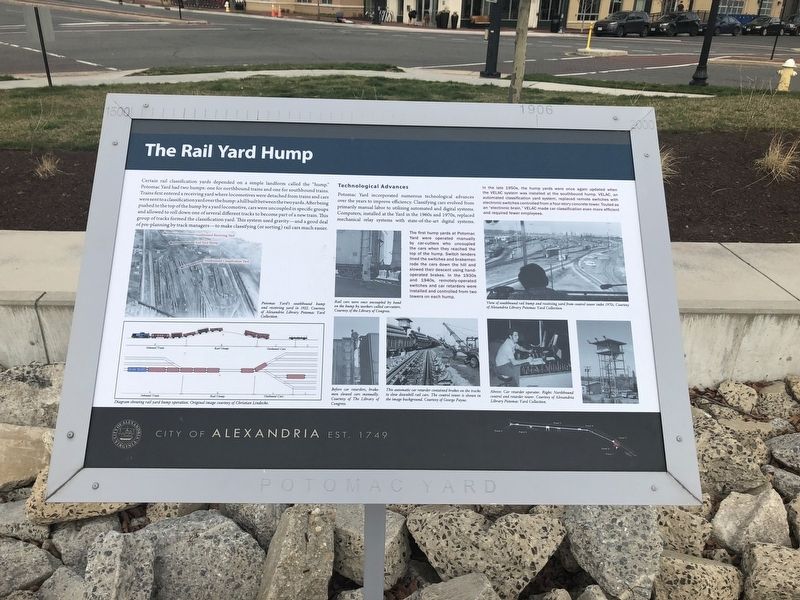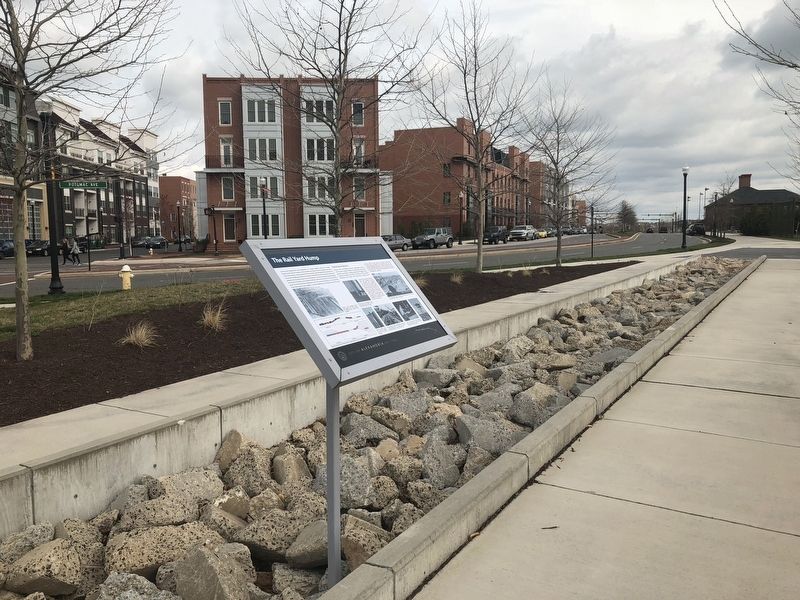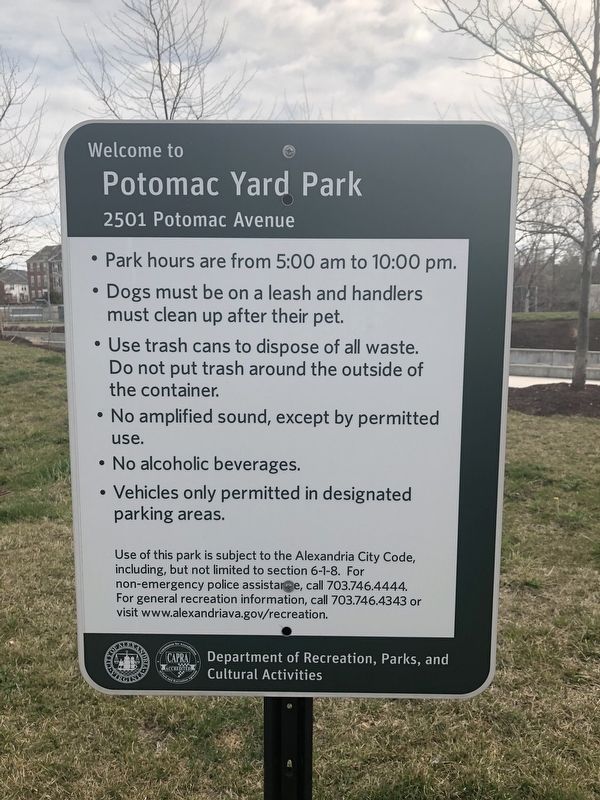Potomac Yard in Alexandria, Virginia — The American South (Mid-Atlantic)
The Rail Yard Hump
City of Alexandria Est. 1749
— Potomac Yard —
Certain rail classification yards depended on a simple landform called the "hump." Potomac Yard had two humps: one for the northbound trains and one for the southbound trains. Trains first entered a receiving yard where locomotives were detached from trains and cars were sent to a classification yard over the hump: a hill built between the two yards. After being pushed to the top of the hump by a yard locomotive, cars were uncoupled in specific groups and allowed to roll down one of several different tracks to become part of a new train. This group of tracks formed the classification yard. This system used gravity—and a good deal of pre-planning by track managers—to make classifying (or sorting) rail cars much easier.
Technological Advances
Potomac Yard incorporated numerous technological advances over the years to improve efficiency. Classifying cars evolved from primarily manual labor to utilizing automated and digital systems. Computers, installed at the Yard in the 1960s and 1970s, replaced mechanical relay systems with state-of-the-art digital systems.
The first hump yards at Potomac Yard were operated manually by car-cutters who uncoupled the cars when they reached the top of the hump. Switch tenders lined the switches and brakemen rode the cars down the hill and slowed their descent using hand-operated brakes. In the 1930s and 1940s, remotely-operated switches and car retarders were installed and controlled from two towers on each hump.
In the late 1950s, the hump yards were once again updated when the VELAC system was installed at the southbound hump. VELAC, an automated classification yard system, replaced remote switches with electronic switches controlled from a four-story concrete tower. Touted as an "electronic brain," VELAC made car classification even more efficient and required fewer employees.
Erected by City of Alexandria.
Topics and series. This historical marker is listed in these topic lists: Railroads & Streetcars • Science & Medicine. In addition, it is included in the Virginia, The City of Alexandria series list.
Location. 38° 49.355′ N, 77° 2.913′ W. Marker is in Alexandria, Virginia. It is in Potomac Yard. Marker is at the intersection of Main Line Boulevard and Potomac Avenue, on the right when traveling north on Main Line Boulevard. The marker stands in the Potomac Yard neighborhood of Alexandria. Touch for map. Marker is at or near this postal address: 650 Potomac Avenue, Alexandria VA 22301, United States of America. Touch for directions.
Other nearby markers. At least 8 other markers are within walking distance of this marker. Crossroads of Transportation (within shouting distance of this marker); Potomac Yard in Transition
Credits. This page was last revised on January 27, 2023. It was originally submitted on March 30, 2018, by Devry Becker Jones of Washington, District of Columbia. This page has been viewed 464 times since then and 38 times this year. Photos: 1, 2, 3. submitted on March 30, 2018, by Devry Becker Jones of Washington, District of Columbia. • Bernard Fisher was the editor who published this page.


